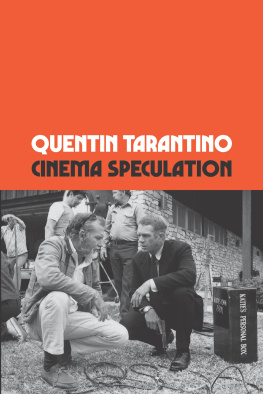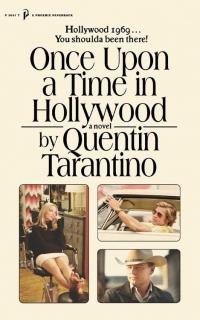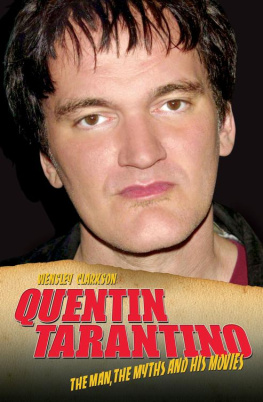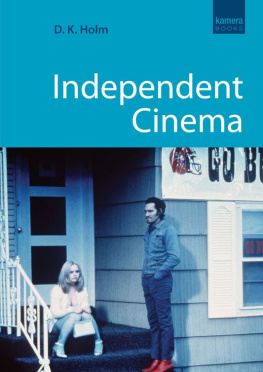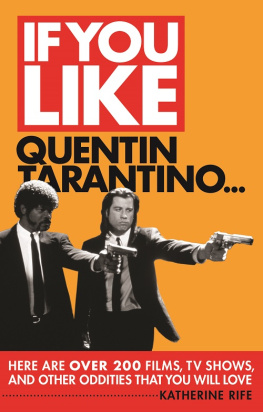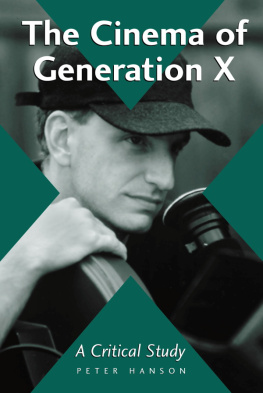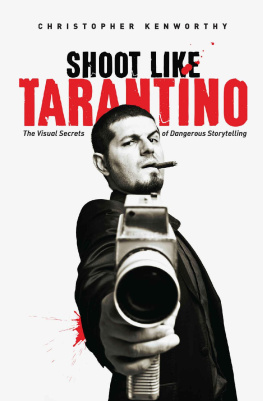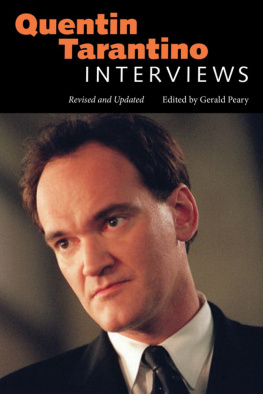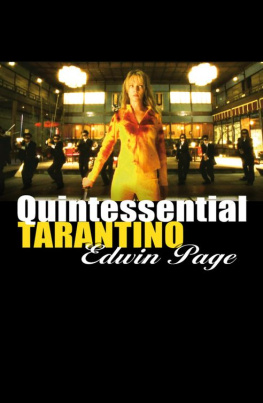Quentin Tarantino - Cinema Speculation
Here you can read online Quentin Tarantino - Cinema Speculation full text of the book (entire story) in english for free. Download pdf and epub, get meaning, cover and reviews about this ebook. year: 2022, publisher: HarperCollins, genre: Non-fiction. Description of the work, (preface) as well as reviews are available. Best literature library LitArk.com created for fans of good reading and offers a wide selection of genres:
Romance novel
Science fiction
Adventure
Detective
Science
History
Home and family
Prose
Art
Politics
Computer
Non-fiction
Religion
Business
Children
Humor
Choose a favorite category and find really read worthwhile books. Enjoy immersion in the world of imagination, feel the emotions of the characters or learn something new for yourself, make an fascinating discovery.
- Book:Cinema Speculation
- Author:
- Publisher:HarperCollins
- Genre:
- Year:2022
- Rating:5 / 5
- Favourites:Add to favourites
- Your mark:
- 100
- 1
- 2
- 3
- 4
- 5
Cinema Speculation: summary, description and annotation
We offer to read an annotation, description, summary or preface (depends on what the author of the book "Cinema Speculation" wrote himself). If you haven't found the necessary information about the book — write in the comments, we will try to find it.
Cinema Speculation — read online for free the complete book (whole text) full work
Below is the text of the book, divided by pages. System saving the place of the last page read, allows you to conveniently read the book "Cinema Speculation" online for free, without having to search again every time where you left off. Put a bookmark, and you can go to the page where you finished reading at any time.
Font size:
Interval:
Bookmark:
I n the late sixties and early seventies, the Tiffany Theater owned certain cultural real estate that made it stand out from the other big cinemas in Hollywood. For one, it wasnt located on Hollywood Boulevard. With the exception of Pacifics Cinerama Dome, which sat proudly by itself on the corner of Sunset and Vine, the other big houses all existed on Old Hollywoods last refuge to the touristsHollywood Boulevard.
During the day tourists could still be seen walking down the boulevard, going to the Hollywood Wax Museum, looking down at their feet and reading the names on the Walk of Fame (Look Marge, Eddie Cantor). People were drawn to Hollywood Boulevard for its world-famous theatres (Graumans Chinese Theatre, the Egyptian, the Paramount, the Pantages, the Vogue). However, once the sun went down and the tourists went back to their Holiday Inns, Hollywood Boulevard was taken over by the people of the night and transformed into Hollyweird.
But the Tiffany wasnt just on Sunset Boulevard, it was Sunset Boulevard west of La Brea, officially making its location the Sunset Strip.
What difference does that make?
Quite a difference.
During that period, huge nostalgia for all things Old Hollywood was taking place. Pictures, paintings, and murals of Laurel and Hardy, W. C. Fields, Charlie Chaplin, Karloffs Frankenstein, King Kong, Harlow, and Bogart were everywhere you looked (this was the time of the famous psychedelic posters by Elaine Havelock). Especially in Hollywood proper (i.e., east of La Brea). But once you drove past La Brea on Sunset, the boulevard turned into the Strip and Old Hollywood as defined by the movies melted away, and Hollywood as the home of hippie nightclubs and the youth culture took over. The Sunset Strip was famous for its rock clubs (the Whisky a Go Go, the London Fog, Pandoras Box).
And right there among the rock clubs and across the street from Ben Franks Coffee Shop sat the Tiffany Theater.
The Tiffany didnt show films like Oliver!, Airport, Goodbye, Mr. Chips, Chitty Chitty Bang Bang, The Love Bug, or even Thunderball. The Tiffany was the home of Woodstock, Gimme Shelter, Yellow Submarine, Alices Restaurant, Andy Warhols Trash, Andy Warhols Frankenstein, and Robert Downeys Pound.
These were the movies that the Tiffany played. And while the Tiffany wasnt the first theatre in Los Angeles to play The Rocky Horror Picture Show or even the first one to have regular midnight screenings, in terms of the legend the film would become it was the first cinema engagement where much of what constituted the Rocky Horror phenomenon really explodedcoming in costume, shadow cast performing, callbacks, theme nights, etc. Throughout the seventies the Tiffany would continue to be the counterculture home for head flicks. Some successful (Frank Zappas 200 Motels), some not (Freddie Francis Son of Dracula with Harry Nilsson and Ringo Starr).
The counterculture films from 196871, whether or not they were good, were exciting. And they demanded to be seen in a crowd, preferably stoned. Soon, the Tiffany would be far less of a scene than it was, because the head movies that came out from 1972 on were more afterthoughts of a niche market.
But if the Tiffany had a year, it was 1970.
T hat same year, at the age of seven, I first attended a show at the Tiffany when my mother (Connie) and my stepfather (Curt) took me to see a double feature: John G. Avildsens Joe and Carl Reiners Wheres Poppa?
Wait a minute, you saw a double feature of Joe and Wheres Poppa? at seven?
You bet I did.
And while that was a memorable screening, hence Im writing about it now, for me at the time, it was hardly culture shock. If we go by author Mark Harris timeline, the beginning of the New Hollywood revolution was 1967. Then my first years of going to see movies at the theatre (I was born in 63) coincided with the beginning of the revolution (67), the cinematic revolutionary war (6869), and the year the revolutionary war was won (70). Which was the year New Hollywood became the Hollywood.
Avildsens Joe made quite a splash when it was released in 1970 (it was an undeniable influence on Taxi Driver). Unfortunately, in the last fifty years this powder keg of a picture has kind of faded away. The film tells the story of a distraught upper middle-class father (played by Dennis Patrick) who loses his daughter (Susan Sarandon, in her motion picture debut) to the hippie drug culture of the era.
While visiting the disgusting pad his daughter shares with her scumbag junkie boyfriend, Patrick ends up bashing his head in (shes not there at the time). While sitting in a tavern, trying to come to grips with both the violence and the crime he committed, he meets a racist loudmouth blue-collar hard hat worker named Joe (played, in a star-making performance, by Peter Boyle). Joe is sitting at the bar, drinking his beer after work, carrying on a profanity filled America Love It or Leave It rant about hippies, black folks, and society circa 1970 in general. Nobody in the working-class tavern is paying attention to him (the bartender even tells him, obviously not for the first time, Joe, gives us all a break).
Joes diatribe ends with the sentiment that somebody oughta kill em all (the hippies). Well, Patrick just did and, in an unguarded moment, makes a barroom confession that only Joe hears.
What follows is the strangely antagonistic, yet symbiotic, relationship between the two different men from two different classes. Theyre not exactly friends (Joes practically blackmailing the anguished father), but in a black-comic twisted way they do become compadres. The distinguished middle-class man of the executive class has enacted the fascistic rants of this low-class blue-collar loudmouth slob.
By blackmailing Patrick into a sort of alliance, Joe shares both the murderers dark secret and, to some degree, the culpability of the murder. This dynamic unleashes the desires and inhibitions of the blue-collar blowhard and buries the cultured mans guilt, replacing it with a sense of purpose and righteousness. Till the two men, armed with automatic rifles, are executing hippies at a commune. And in a tragic, ironic freeze-frame, the father ends up executing his own daughter.
Pretty strong stuff? You bet.
But what that synopsis cant begin to convey is how fucking funny the film is.
As harsh, and ugly, and violent as the movie Joe is, at its heart its a kettle-black comedy about class in America, bordering on satire, while also being savagely vicious. Blue-collar, upper middle class, and youth cultures are represented by their worst surrogates (every male character in the film is a loathsome cretin).
Today it might be controversial to even refer to Joe as a black comedy. But it sure wasnt when it was first released. At the time I saw Joe it was easily the ugliest movie Id ever seen (a spot it held till four years later when I saw The Last House on the Left). Frankly it was the squalor of the apartment the two junkies at the beginning lived in that creeped me out the most. In fact, it made me a little sick to my stomach (even the rendering of the junkie apartment in the Mad Magazine spoof made me a little ill). And the audience at the Tiffany Theater in 1970 watched the early section of the film in silence.
But once Dennis Patrick enters the tavern, and Peter Boyles Joe enters the movie, the audience started laughing. And in no time at all the adult audience went from repulsed repose to outright hilarity. I remember they laughed at pretty much every fucking thing Joe said. It was a superior laugh; they were laughing
Font size:
Interval:
Bookmark:
Similar books «Cinema Speculation»
Look at similar books to Cinema Speculation. We have selected literature similar in name and meaning in the hope of providing readers with more options to find new, interesting, not yet read works.
Discussion, reviews of the book Cinema Speculation and just readers' own opinions. Leave your comments, write what you think about the work, its meaning or the main characters. Specify what exactly you liked and what you didn't like, and why you think so.

